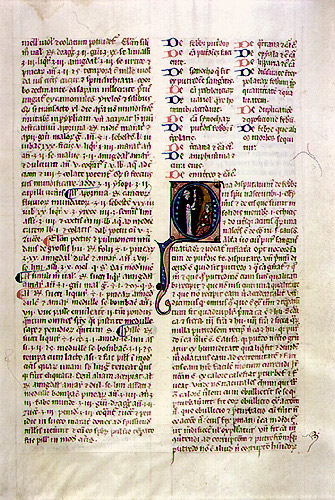Paris, mid-thirteenth century
The seven texts in this manuscript were all required reading for medical students in Paris in the thirteenth century. Six of the treatises are translations from the Arabic and date from before the year 950: Johannitus, who wrote the Introduction ad artem parvam Galeni, lived in Baghdad in the ninth century; Philaretus wrote his study of the pulse in the first half of the seventh century; Isaac Judaeus was a Jewish physician who lived in Quairawan in the early tenth century. Three, probably four, of the texts in the manuscript can be attributed to Isaac: De dietis universalibus, De dietis particulares, the Liber urinarum, and the Liber elementorum. The Arabic texts were translated by Constatinus Africanus, a monk of Montecassino who died in 1087. The most recent treatise is Giles of Corbeil's study of the pulse, probably written at the beginning of the thirteenth century.
The manuscript includes fascinating illustrations of doctors at work (frequently dressed in Dominican habit). Within an historiated initial "Q" in the Liber urinarum, the illustration shown here depicts a doctor examing a urine flask and pointing to the patient seated before him. A guide sketch for the artist is visible below the text.
Parchment, 149 folios, 290 x 193 (190 x 125) mm, 2 columns (58 mm each), 44-46 lines, in Latin, written in Gothic script.
